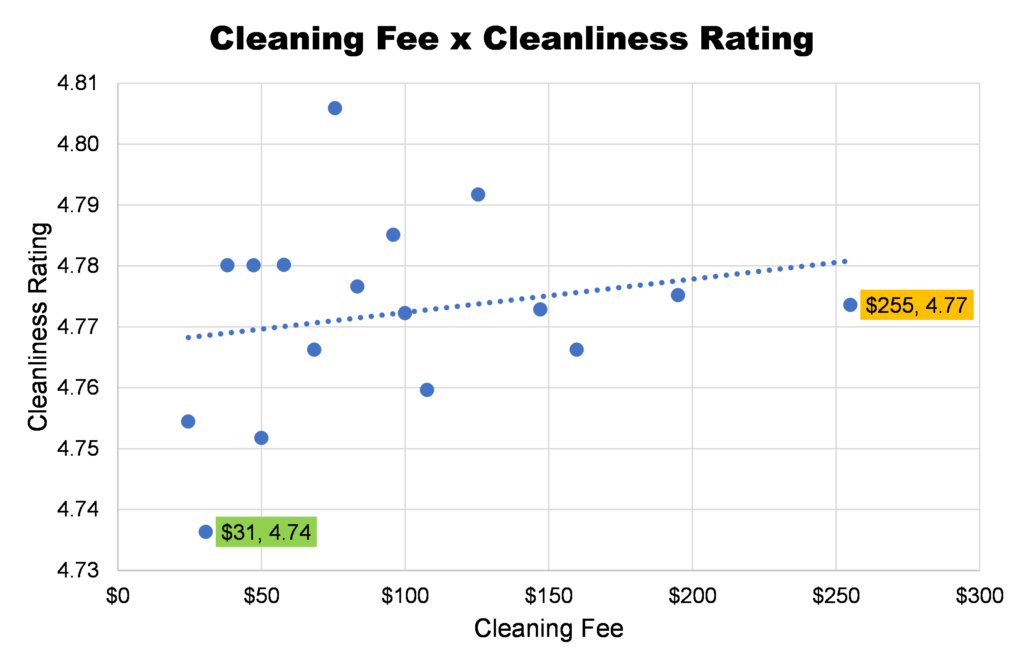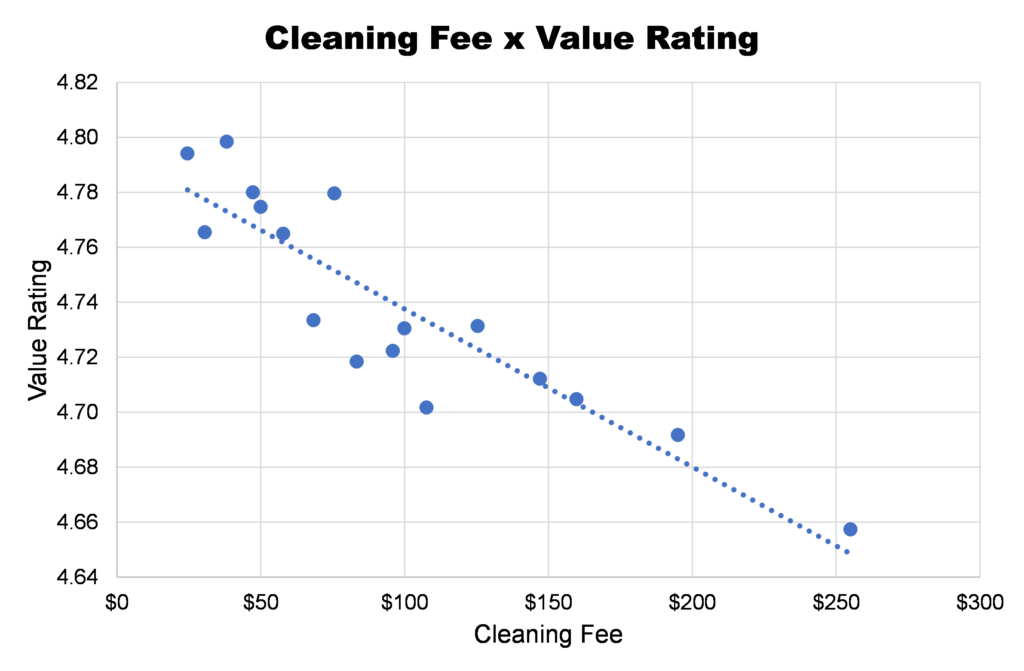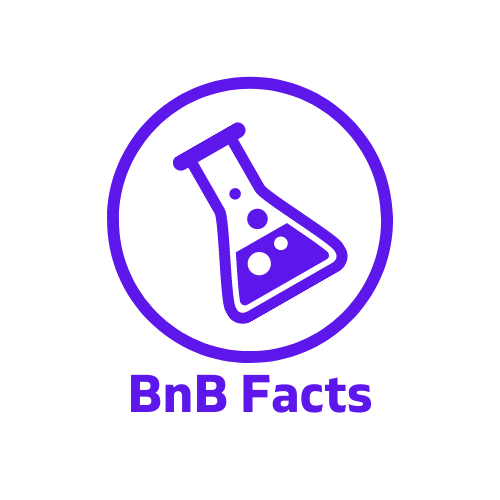Introduction to the Analysis
In a previous analysis we laid the groundwork on cleaning fees. First, we looked at how common it is for hosts in the US to have one and found more than 80% of did. Next, we looked at the distribution of cleaning fees to see how much they were charging. We found the median (or middle of the distribution) to be $75. Finally, we expressed this in terms of listing rate (nightly price x minimum nights) and found that the cleaning fee is generally around 25% of the listings fee.
All of these insights were good for a high-level exploratory analysis. However, now we’ll take it a step further. For the analysis, we’ll use the a dataset of 250k listings from the US from April 2020. Data was sourced from Inside Airbnb, an activist project with the objective to provide data that quantifies the impact of short-term rentals on housing and residential communities
First, we’ll correlate the cleaning fee to the cleanliness rating. This will help us answer does a higher cleaning fee lead to a cleaner place. Next, we’ll look at how the cleaning fee is correlated to the value rating. This will help us answer if the cleaning fee impacts the guest’s perception of value. Finally, we’ll speculate on how some hosts are using the cleaning fee as a variable pricing mechanism. We’ll also estimate how many hosts may be doing this.
Cleaning fee vs. cleanliness rating
To determine if the cleaning fee is a predictor of cleanliness, we’ll use the cleanliness rating. To examine the relationship, we’ll organize the dataset into 20 subsets (called quantiles) from the lowest to highest cleaning fee. Taking this approach with this data set gives us cleaner results to look at.
The first subset (quantile) contains the 5% of all listings with the lowest cleaning fees. The next subset contains with the next lowest cleaning fees and so on. All the way to the top 5% of listings with the highest cleaning fees. This was done below. For presentation, outliers were removed.

Each point on the graph above compares price to cleanliness rating. In the example highlighted in green, that subset of listings had an average cleaning fee of $31 and average cleanliness score of 4.74. The other example highlighted in orange had an average cleaning fee of $255 compared to a cleanliness score of 4.77. That’s not much a difference for almost $200 more in cleaning fees.
In fact, we can see this across all other subsets. There is little correlation between cleaning fee and the cleanliness rating. This is demonstrated by the dotted line of best fit. In a correlated data set, the observations (dots) would be close to the line. Here, they’re all over the place showing cleaning fee is not correlated to the cleanliness rating.
Why does cleaning fee not correlate to cleanliness
We can see that a high cleaning fee does not lead to a high cleanliness rating, but why is that? Here are some possible explanations:
- Higher fees lead to higher expectations: It could be that as cleaning fees increase, so do expectations of cleanliness. If expectations rise in line with the fee itself, this will impact the correlation.
- Inconsistency of the effort/quality of job done cleaning: Let’s assume the cleaning fee goes 100% towards cleaning supplies or an outsourced cleaning service. Also consider a variety of people including hosts themselves and cleaning services do the cleaning. All these different people won’t do the same job cleaning, either due to effort or ability. This inconsistency would mean spending more wouldn’t guarantee a better job done cleaning, thus impacting the correlation.
- The fee is not fully used on cleaning: We must also consider not every host is using 100% of the cleaning fee for cleaning. This too would impact the relationship between dollars spent and cleanliness. We’ll explore one way hosts may be using the cleaning fee in such a way further below.
Cleaning fee vs. value rating
Next, we’ll look at how the cleaning fee correlates to the value rating. For this, we’ll take the same approach as above and look at how the subsets (quantiles) compare to the value score.

Here we can see just like with price, there is a strong negative correlation between the cleaning fee and the value rating. In other words, as the cleaning fee goes up, the value rating falls. This is perhaps to be expected as guests often choose Airbnb over conventional accommodations like hotels with value in mind.
Today when guests search for a place on Airbnb, they only see the nightly rate. It is only once they go to book that they see the other fees. With extra guest fees, cleaning fees, service fees and taxes, the guest ends up paying more than the nightly rate they were first presented. The bigger that difference is, the more it could be affecting the guest’s perception of value. Making matters worse is that, as shown above, the guest may not be getting cleanliness in line with the cleaning fee they paid.
Using the cleaning fee for variable pricing
One possible reason the cleanliness fee does not align with the cleanliness rating would be if hosts are not using all of the fee for cleaning. Instead, some hosts may be using the cleaning fee to institute variable pricing.
Hosts on the Airbnb platform are constantly balancing occupancy with cost and effort. Most hosts prefer longer stays as they mean fewer turnovers between guests, which means less cost and effort. On the other hand, many hosts see the need to maximize occupancy to maximize revenue. This balancing act would be a lot easier with variable pricing.
Variable pricing means the nightly price changes depending on number of nights booked. The Airbnb platform however does not allow this.
As an example, let’s say there is a host who strongly prefers bookings with a minimum of two nights but is willing to accept booking for one night at a higher price. If variable prices were allowed on the platform, that host could charge $100 per night if booking a minimum of two nights or $200 per night if booking for only one night.
Without having actual variable pricing on the platform, the host instead has the cleaning fee at their disposal. Setting a high cleaning fee discourages guests for booking for only one night. This funnels more multi-night guests to the hosts, which they prefer. However, the host is happy to host any guest willing to pay the cleaning fee for a single night as they’ve built the extra effort into that price.
In the example above we can see this variable pricing strategy in action. The cleaning fee is set at $150 compared to the nightly rate of $50. The total payout (nightly rate + cleaning fee) per night is therefore higher for the 1-night stay than the 3-night stay.
How many Airbnb hosts use the cleaning fee for variable pricing
There’s no way to know for certain how many hosts are using the cleaning fee for this purpose versus honestly reflecting their cost of cleaning. But as a rough estimate, we can look at the number of listings that have a cleaning fee at least as high as their nightly rate and a minimum nights of one.
The number of hosts meeting this criteria is 7,165. Out of the total dataset of 250k, that’s a little under 3%. Without considering that some of those hosts may not be deliberately implementing this strategy, we can conclude that the percentage of hosts implementing it is very low.
Key Takeaways
- Cleaning fee is not correlated to cleanliness; a higher cleaning fee does not necessarily mean a cleaner listing
- Cleaning fee is negatively correlated to the value rating. The higher the cleaning fee, the lower the value rating on average
- A small number of hosts <3% may be using the cleaning fee as a variable pricing mechanism.

